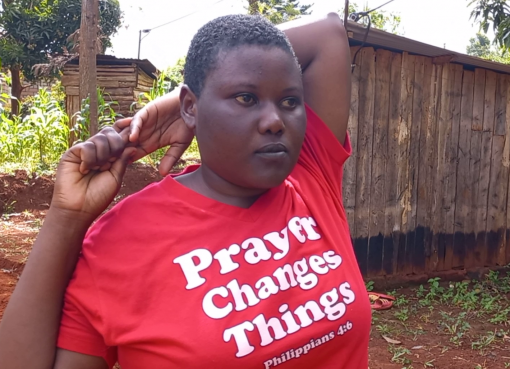The Ministry of Health has targeted the distribution of over 15 million nets across the country to curb the spread of malaria.
The Principal Secretary for Public Health and Professional Standards, Mary Muthoni, said the ongoing El Nino rains provided a conducive environment for the breeding of mosquitoes, which necessitated the use of nets.
She said the Kenya malaria indicator survey report indicates that about 4 million Kenyans contract malaria disease, while more than 10,000 people die of the disease annually.
The PS said the Ministry, in collaboration with partners such as the Global Fund, US-Aid, and the World Health Organisation, among others, was supporting the distribution of mosquito nets.
Muthoni said they have mapped out at least 22 counties that are prone to the spread of malaria.
She said the government has also incorporated flood-affected counties in the North Eastern region, adding that they are focusing on preventive rather than curative interventions.
“Many health survey reports list malaria among the leading killer diseases in the country. The most affected are expectant mothers, children of five years and below, and elderly persons,” Muthoni said.
Speaking during the launch of the mass distribution of nets at Ndiru playground in Rangwe constituency, Homa Bay County, the PS urged beneficiaries to use the nets for the intended purposes.
The distribution exercise is being undertaken by more than 100,000 community health promoters across the country.
The exercise is digitised through a system, which is an end-to-end process. This prevents the loss of the nets through corruption.
Beneficiaries are required to produce their identity cards (IDs) for their details to be captured before they receive the nets.
Present during the launch were Homa Bay Governor Gladys Wanga, US-Aid Mission Director David Gosney, Global Fund representative Abdul Fuiza, his World Health Organisation counterpart James Otieno, and Kenya’s Health Director General Patrick Amoth.
The PS said the use of nets was one of the most cost-effective methods of controlling the spread of malaria.
“The government is also promoting interventions such as Indoor Residual Spray (IRS), vaccination, and the use of anti-malarial drugs, among others,” she added.
Muthoni urged Kenyans to remain vigilant during the ongoing El Nino rains to keep malaria and diseases such as cholera, dysentery, and bilharzia at bay.
She called for the maintenance of a proper drainage system, waste disposal, personal hygiene, and the clearing of bushes to prevent the multiplication of mosquitoes.
“The slogan of mbu nje sisi ndani will be appropriate if we effectively use mosquito nets. We want to kick malaria out of Kenya,” the PS said.
Governor Wanga said Homa Bay is among the counties around the lake region with a high malaria prevalence.
Statistics indicate that the county has a 3.6 prevalence of the disease. The county received a total of 841,000 treated mosquito nets.
“Malaria contributes to the high morbidity and mortality we record in Homa Bay. Children are still at high risk of contracting the life-threatening disease,” Wanga said.
Gosney said their 16 years of partnership with Kenya have seen a 50 percent reduction in malaria spread. He said US-Aid has a programme of Sh2.5 billion to address malaria in counties around the Lake Region.
He said they were investing more in new technology and research to succeed in the fight against malaria.
“US-Aid is going to support the distribution of at least 4 million bed nets in its effort to fight malaria. We’re in Homa Bay as a testament that the fight against malaria prevalence can be achieved,” Gosney said.
Amoth urged Kenyans to ensure children are vaccinated against diseases such as malaria, polio, measles, and chicken pox for good health.
He said that for every 1000 live births, 61 die of malaria.
“The government is working with community health promoters to ensure skilled birth is fully embraced,” Amoth said.
By Davis Langat





